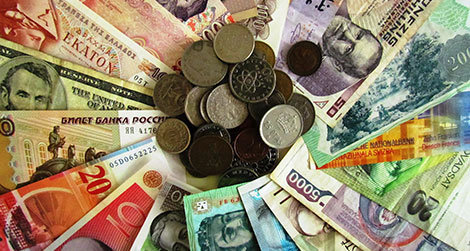Once upon a time–as late as 2018–the consensus thinking in financial markets was that the Federal Reserve was but the first central bank to raise interest rates. Other central banks, most notably the European Central Bank, (but not the Bank of Japan, which may never raise interest rates again) were widely expected to follow suit. The argument was about the duration of the lag between the Federal Reserve and the ECB.
The expectation was that central-bank policy was on the road to a convergence that would result in a modest effort to move money supply growth and bank balance sheets back toward pre-Global Financial Crisis conditions. (In August 2008 the Federal Reserve’s balance sheet was a mere $870 billion. It peaked at $4.5 trillion in 2015 and was down to $4.04 trillion at the end of 2018.)
Now, however, with the Fed’s apparent decision not to raise interest rates in 2019 (or, okay, maybe once), all the world’s central banks do indeed seem to be moving toward a policy convergence.
It’s just that the convergence point looks like it will leave balance sheets vastly inflated above pre-crisis levels and will leave interest rates close to or below 0% in real terms (that is after subtracting the effects of inflation.)
The global convergence point will be well into stimulus territory. Great for financial markets in the short term. Worrying if you think that there will be another downturn someday that will require central banks to spring into action to head off a recession.
Take the example of the European Central Bank. At its December 13 meeting the bank’s governors announced that they would end the bank’s program of buying bonds at the end of December. That effort had been buying 2.5 billion euros ($2.86 billion) of bonds each month.
But ECB President Mario Draghi was quick to point out at his post meeting press conference, that the bank will continue to roll over the proceeds from maturing bonds into the purchase of new bonds. And it would continue to do so, he said, well past the bank’s first interest rate increase. Whenever that might be now that the European Central Bank has cut its inflation and growth rate outlooks for 2019. The bank is now expected not to raise interest rates until 2021 or so.
Which leaves the Federal Reserve and the European Bank relatively close together on policy. The Fed, according to the financial markets, won’t raise interest rates at all in 2019 and its next move will be an interest rate cut in 2020. It will, for the moment continue to reduce its balance sheet by $50 billion a month but that policy is now termed “flexible” after Fed chair Jerome Powell set off a market sell off in December by saying that the reductions were on “autopilot.” The European Central Bank won’t raise interest rates until 2021 and it will continue rolling the proceeds from maturing bonds into new bond purchases until sometime after the first interest rate hike.
In China the People’s Bank recently said that it will not “fling open the doors of stimulus” in 2019 but if not “flung,” they are sure wide open enough to ride a bull market through. On January 25 the People’s Bank unveiled a program that lets holders of commercial bank perpetual debt to swap it for central bank bills that can be used as collateral for borrowing. Perpetual debt is debt without a maturity date. (In other words it never needs to be paid off.) In a statement of stunning understatement, the People’s Bank said that this program will “increase the financing support for the real economy.” Immediately after the launch of this program, the China Banking and Insurance Regulatory Commission eased restrictions on insurers looking to invest in perpetual debt.
For the past two years the Chinese central bank has been fighting a war to restrain financial speculation while supporting the real economy. That’s always been a tough line to walk. With the action of January 25, I’d argue that the bank has at the least moved the line if not erased it completely.
And as for the Bank of Japan? Business as usual in the land of perpetually negative interest rates. At its January meeting the Japanese central bank left its benchmark short-term interest rate unchanged at -0.1% and kept the target yield for the 10-year government bond at 0%. The bank also revised downward its inflation forecast for fiscal 2018 to 1.1% from an earlier 1.6%.
Looking around at major global economies what I see is falling inflation expectations–partially driven by lower oil prices–and falling forecasts for economic growth. Central bankers, who had looked like they might be converging on something like an attempt to return to pre-crisis conditions, now look like they have throw in the towel on that effort. Without even getting close to pre-crisis normal–how close to normal is a Fed balance sheet that still stands at $4.04 trillion?–central banks seem to be moving toward stimulus again, driven by fears of slowing growth.
Don’t fight the Fed indeed. But while it’s clear that’s a signal to go long in the short term, it’s not at all clear what these developments in central bank policy mean for 2020 and beyond.


